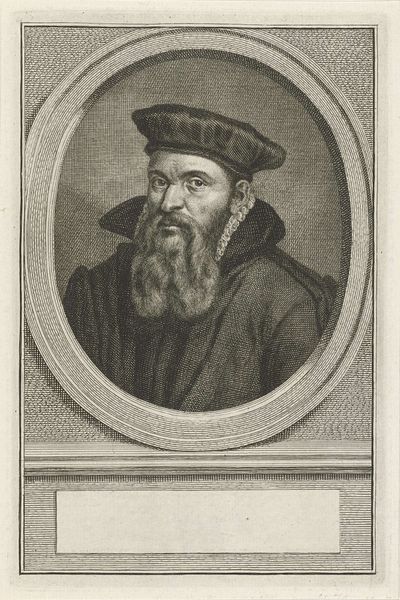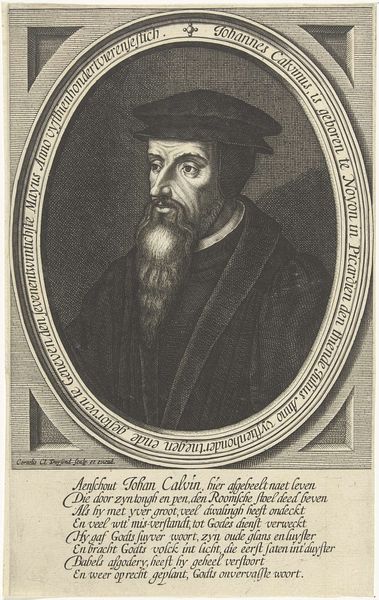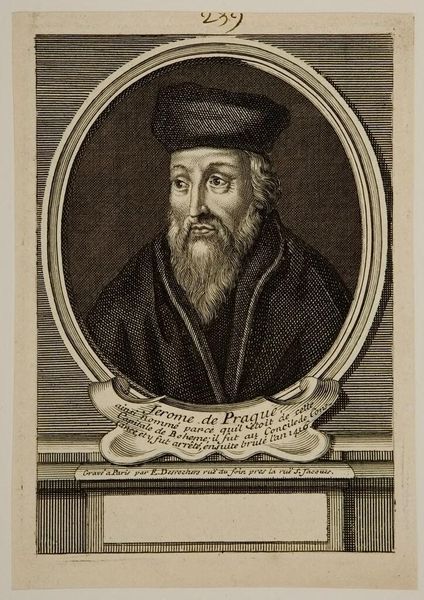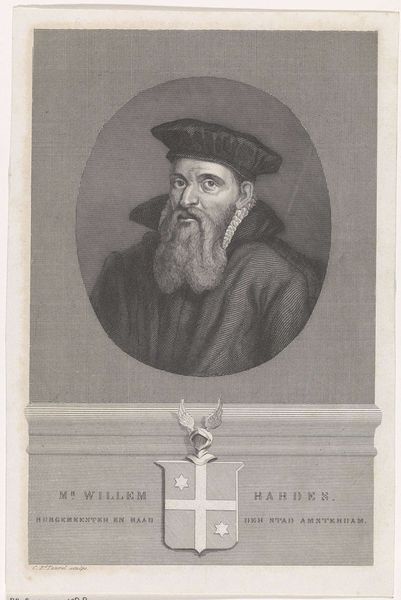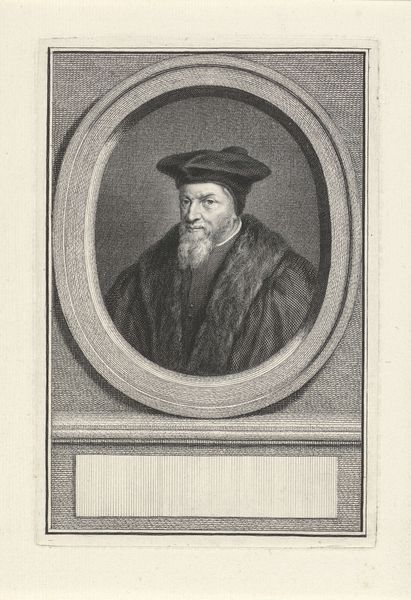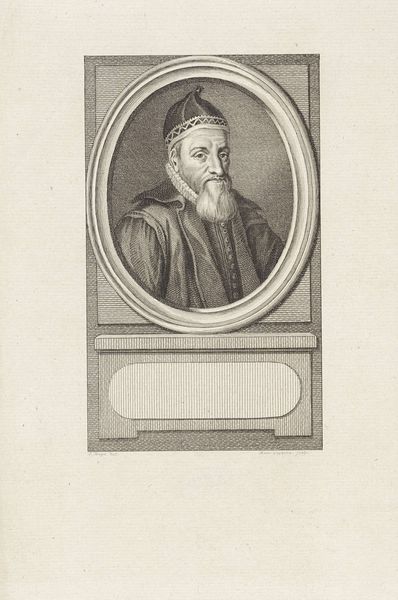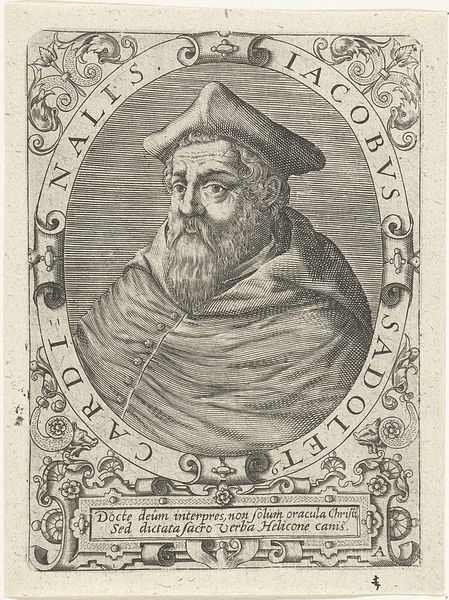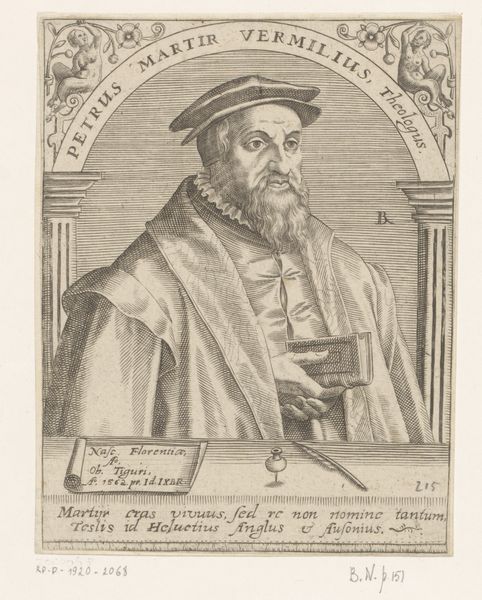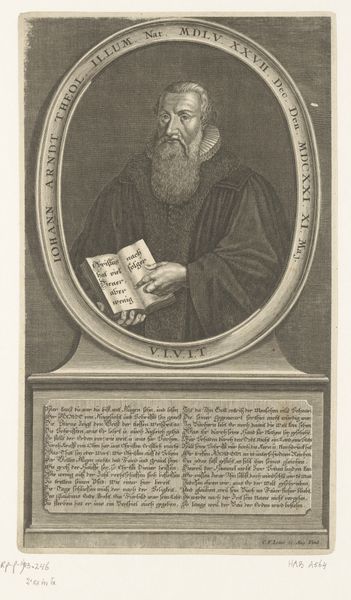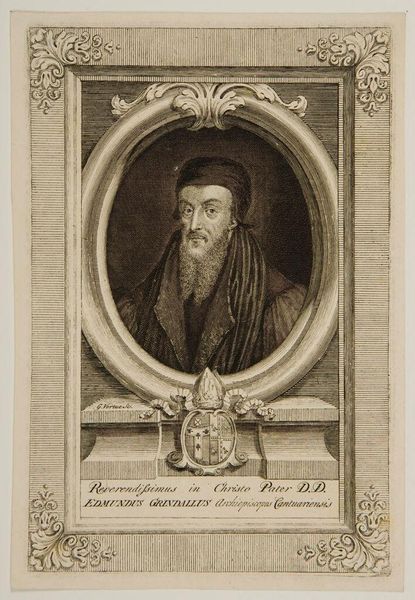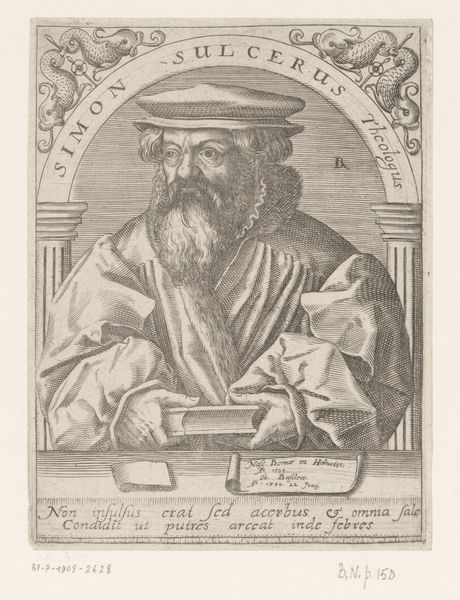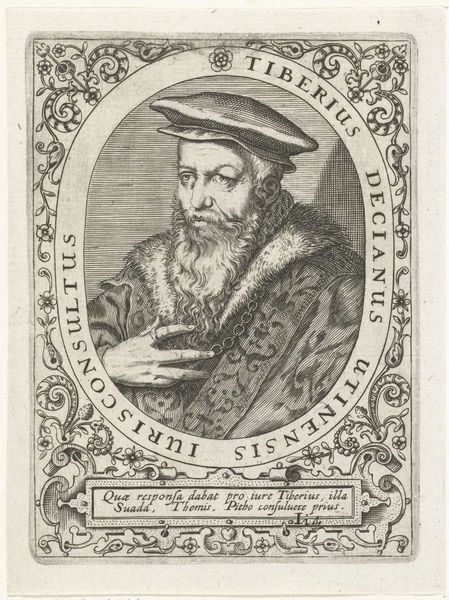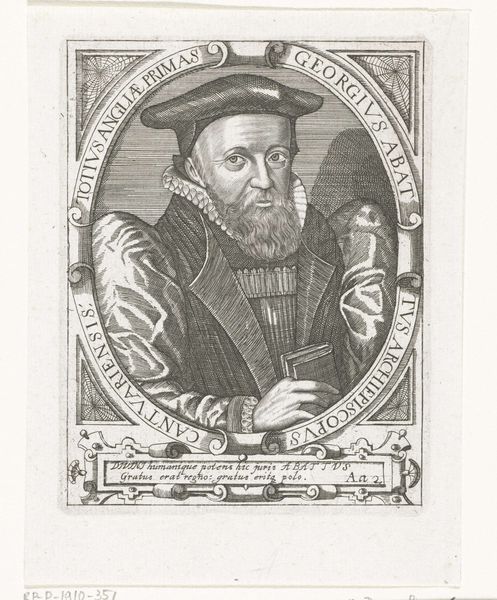
Dimensions: height 182 mm, width 120 mm
Copyright: Rijks Museum: Open Domain
Curator: Let's turn our attention to this print from somewhere between 1749 and 1796, currently held at the Rijksmuseum. It's a portrait of Willem Bardes, engraved by Jacob Houbraken. What strikes you first about this piece? Editor: Well, the immediacy of the gaze is remarkable, especially for an engraving. The artist has captured a striking level of detail and presence with simple lines and their absence, drawing the eye to the sitter’s strong facial structure. Curator: Absolutely. Houbraken, a prominent figure in 18th-century Dutch art, created this portrait, offering us a glimpse into the Amsterdam elite of the Reformation era. It portrays Willem Bardes, a significant figure in the city's governance following the religious and political shifts of the time. It’s more than a likeness; it's a statement about civic leadership. Editor: Agreed. The starkness of the medium combined with the baroque setting seems to strip back layers to what is considered the most crucial representation, namely of the figure himself. The choice of using the medium of engraving lends a sense of weightiness and history to the image that may otherwise be absent from painting alone. Curator: Precisely! Consider the social implications. Portrait engravings like these were crucial for disseminating images of important figures throughout society. It solidifies his place in the cultural and political memory. What stories do you think prints like these would tell in households of the period? Editor: I am sure many were influenced by this man's perceived prestige, both the figure within and the work as an accessible form, where there could be access and discussion beyond its visual form. Looking closely, it’s fascinating how the artist achieves tonal variations using only lines, and that in itself creates a very captivating dimension. Curator: It’s a remarkable print that blends artistry and socio-political context. What initially appeared simple actually reveals an intricate dance of meaning and visual skill. Editor: A potent mix that transforms a portrait into a historical and aesthetic statement, which makes for a wonderful way of representing those involved in the evolution of a given country.
Comments
No comments
Be the first to comment and join the conversation on the ultimate creative platform.
